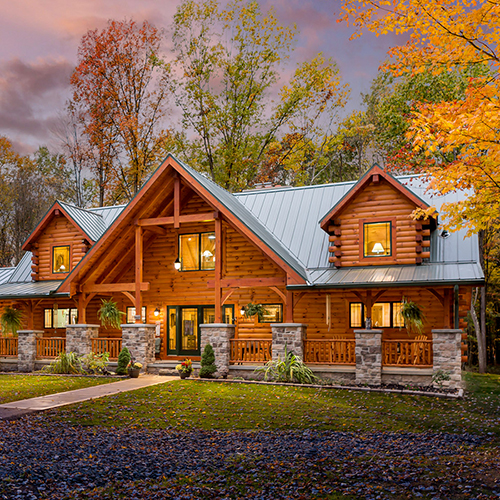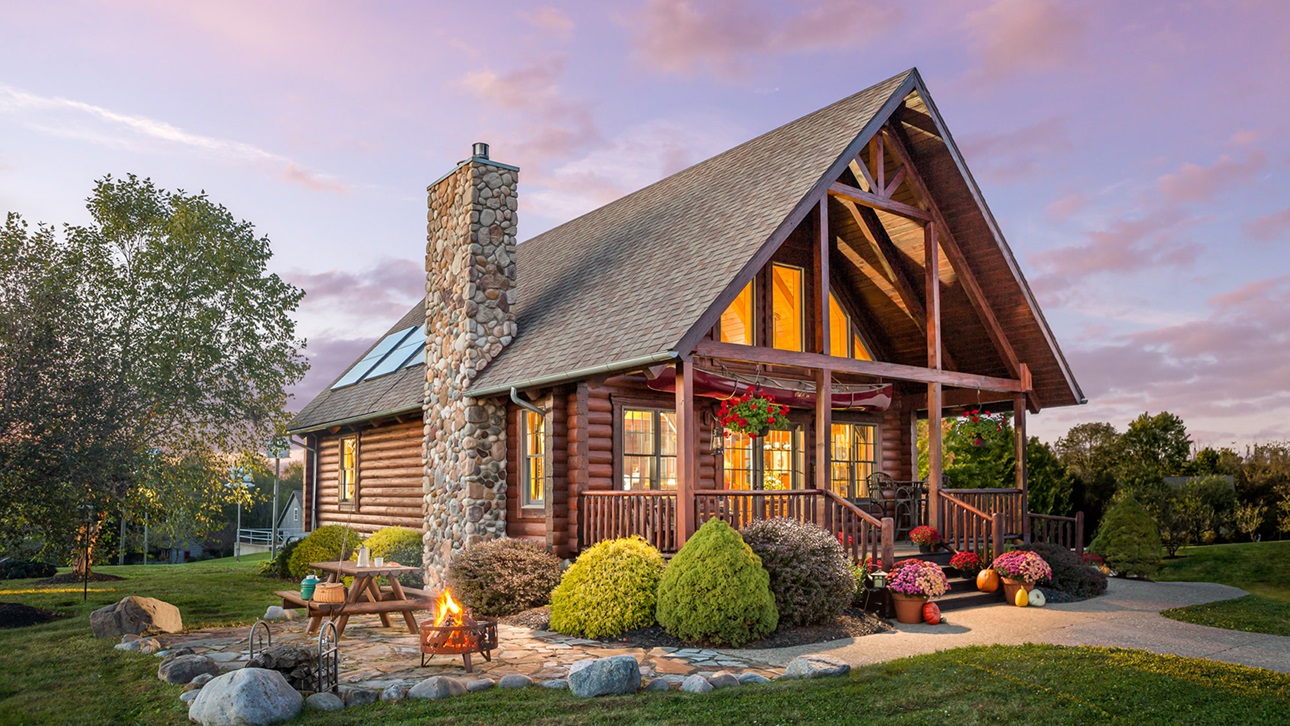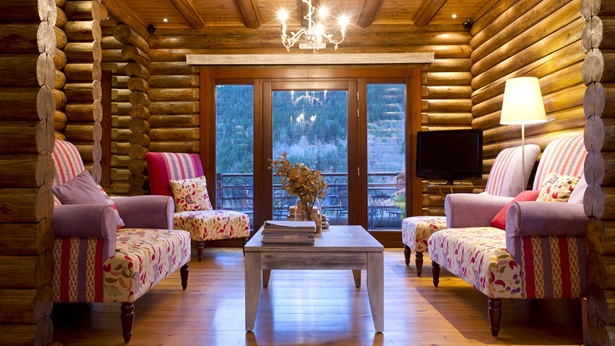7 Frequently Asked Questions About Log Homes
Building a dream log home can be an exciting, new process for most people, who often have questions about what building and living in a log home is like.
Here are some frequent questions clients ask:
1. Does a log home cost more than a stick-built home?
If you consider the price of two homes with four walls and conventional roof trusses, but one is built using solid, 6-inch logs and the other with two-by-four stick framing, the price would be a wash.
However, people who love log homes tend to also prefer features such as cathedral ceilings, quality cabinets, high-end chandeliers and custom front doors. All these upgrades increase the initial investment for a log home.
2. How much does a log home cost?
This question is virtually impossible to answer without first considering a few variables, including:
- Design: Complex home designs and homes with larger footprints typically cost more per square foot. A single-story home generally costs more per square foot because of the additional roof and foundation required compared to 1.5- or two-story homes.
- Location: Home prices can vary based on location. For example, a home in the New England region or California will likely cost more than a comparable home in the Midwest. Also, home prices tend to be higher closer to major metropolitan areas.
- Amenities: The components used in a home can also affect the overall cost. Water faucets can range from $50-$750 each, kitchen cabinets can range from $5,000 to $50,000, and a front door can cost $500 to $30,000, for example.
Generally, a log home will cost about the same as a high-quality, custom home in your area. Hochstetler Log Homes can help determine your approximate turnkey investment.
3. Are log homes energy efficient?
Yes, very much so! A 1980s study by the National Institutes of Standards and Technology examining lightweight wood frame, masonry and log-walled homes found that mass-wall buildings — including concrete masonry and log homes — outperformed well-insulated, lightweight wood frame buildings in energy efficiency, according to a 2021 Log & Timber Homes Council report.
4. Do log homes require more maintenance than stick-built homes?
Log homes tend to require less interior maintenance, but more exterior maintenance than a typical stick-built home.
Generally, there is more exterior maintenance than on, let’s say, a vinyl-sided home. However, there’s not as much of a difference as one might think. When you consider expensive types of maintenance, such as wind or hail damage, or even Little League baseballs, log homes perform much better.
Wood is a natural material, making it warmer and cozier than any manmade material such as drywall, vinyl or concrete. Perhaps there’s more maintenance, but the same is true for natural grass compared to artificial turf. The question is: Who would want to play with their grandchildren on a maintenance-free yard of fake grass? A log home is a lifestyle, and you will love caring for it.
5. Aren’t log homes prone to insects?
Not any more so than any other home.
The misconception that log homes are prone to insects exists because insect problems are easier to notice in a log home while insect problems in stick-built homes can be present for years before the home owner realizes.
In fact, cavity-loving insects such as yellow jackets don’t nest in solid log walls, and carpenter bees don’t typically damage logs structurally. But they can be annoying.
Home owners can deter pests by adding bug repellent to the wood stain and having an exterminator treat the home with a modified pyrethroid insecticide such as Demand CS Insecticide in April and July. Regardless of what type of home you own, stick or log, you should hire an exterminator to go over your home at least once a year.
6. What is the air quality like in a log home?
John Bower, founder of Healthy House Institute, says, “Walking into a modern building can sometimes be compared to placing your head inside a plastic bag that is filled with toxic fumes.”
Conventional homes with drywall, fiberglass insulation and cavities for potential mold can outgas high levels of formaldehydes and other toxic pollutants.
A log home built with natural wood material provides a much better environment for your family.
7. Can I use my own builder?
If you have your own builder, connect them with the log home manufacturer for review, training and guidance. Buy materials directly from the manufacturer to ensure graded logs and a warranty. The log home manufacturer will be your third-party agent to make sure your home is built with the quality materials you expect.
Visit our website for more articles on the log home building process.
Story by: Levi Hochstetler, owner of Hochstetler Log Homes





